Potrebujeme váš súhlas na využitie jednotlivých dát, aby sa vám okrem iného mohli ukazovať informácie týkajúce sa vašich záujmov. Súhlas udelíte kliknutím na tlačidlo „OK“.
ASTM G39-99(2011)
Standard Practice for Preparation and Use of Bent-Beam Stress-Corrosion Test Specimens
Automaticky preložený názov:
Štandardná prax pre prípravu a používanie Bent-Beam Stress-korózia skúšobných vzoriek
NORMA vydaná dňa 1.3.2011
Informácie o norme:
Označenie normy: ASTM G39-99(2011)
Poznámka: NEPLATNÁ
Dátum vydania normy: 1.3.2011
Kód tovaru: NS-57667
Počet strán: 8
Približná hmotnosť: 24 g (0.05 libier)
Krajina: Americká technická norma
Kategória: Technické normy ASTM
Kategórie - podobné normy:
Anotácia textu normy ASTM G39-99(2011) :
Keywords:
bent-beam, constant deformation, constant load, elastic strain, quantitative stress, stress-corrosion cracking, stress-corrosion test specimen, Bent-beam weldment, Constant deformation, Corrosion--stress-corrosion, Elastic strain, Specimen preparation (for testing)--corrosion testing, Stress corrosion cracking (SCC), ICS Number Code 77.040.10 (Mechanical testing of metals), 77.060 (Corrosion of metals)
Doplňujúce informácie
| Significance and Use | ||||||||||||||
|
The bent-beam specimen is designed for determining the stress-corrosion behavior of alloy sheets and plates in a variety of environments. The bent-beam specimens are designed for testing at stress levels below the elastic limit of the alloy. For testing in the plastic range, U-bend specimens should be employed (see Practice G30). Although it is possible to stress bent-beam specimens into the plastic range, the stress level cannot be calculated for plastically-stressed three- and four-point loaded specimens as well as the double-beam specimens. Therefore, the use of bent-beam specimens in the plastic range is not recommended for general use. |
||||||||||||||
| 1. Scope | ||||||||||||||
|
1.1 This practice covers procedures for designing, preparing, and using bent-beam stress-corrosion specimens. 1.2 Different specimen configurations are given for use with different product forms, such as sheet or plate. This practice applicable to specimens of any metal that are stressed to levels less than the elastic limit of the material, and therefore, the applied stress can be accurately calculated or measured (see Note 1). Stress calculations by this practice are not applicable to plastically stressed specimens. Note 1—It is the nature of these practices that only the applied stress can be calculated. Since stress-corrosion cracking is a function of the total stress, for critical applications and proper interpretation of results, the residual stress (before applying external stress) or the total elastic stress (after applying external stress) should be determined by appropriate nondestructive methods, such as X-ray diffraction (1). 1.3 Test procedures are given for stress-corrosion testing by exposure to gaseous and liquid environments. 1.4 The bent-beam test is best suited for flat product forms, such as sheet, strip, and plate. For plate material the bent-beam specimen is more difficult to use because more rugged specimen holders must be built to accommodate the specimens. A double-beam modification of a four-point loaded specimen to utilize heavier materials is described in 10.5. 1.5 The exposure of specimens in a corrosive environment is treated only briefly since other practices deal with this aspect, for example, Specification D1141, and Practices G30, G36, G44, G50, and G85. The experimenter is referred to ASTM Special Technical Publication 425 (2). 1.6 The bent-beam practice generally constitutes a constant strain (deflection) test. Once cracking has initiated, the state of stress at the tip of the crack as well as in uncracked areas has changed, and therefore, the known or calculated stress or strain values discussed in this practice apply only to the state of stress existing before initiation of cracks. 1.7 The values stated in SI units are to be regarded as standard. The inch-pound values in parentheses are provided for information. 1.8 This standard does not purport to address all of the safety concerns, if any, associated with its use. It is the responsibility of the user of this standard to establish appropriate safety and health practices and determine the applicability of regulatory limitations prior to use. (For more specific safety hazard information see Section 7 and 12.1.) |
||||||||||||||
| 2. Referenced Documents | ||||||||||||||
|
Podobné normy:
Historická
1.4.2012
Historická
1.5.2010
Historická
1.11.2010
Historická
1.5.2014
Historická
1.4.2009
Historická
1.11.2013
Odporúčame:
Aktualizácia zákonov
Chcete mať istotu o platnosti využívaných predpisov?
Ponúkame Vám riešenie, aby ste mohli používať stále platné (aktuálne) legislatívne predpisy
Chcete vedieť viac informácií ? Pozrite sa na túto stránku.


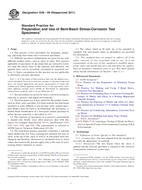
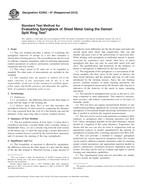 ASTM E2492-07(2012)..
ASTM E2492-07(2012)..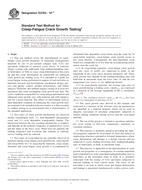 ASTM E2760-10e2
ASTM E2760-10e2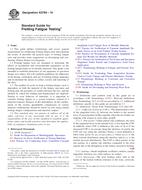 ASTM E2789-10
ASTM E2789-10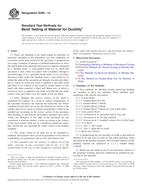 ASTM E290-14
ASTM E290-14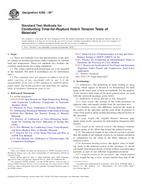 ASTM E292-09e1
ASTM E292-09e1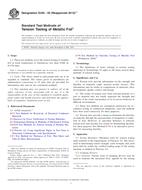 ASTM E345-93(2013)e1..
ASTM E345-93(2013)e1..
 Cookies
Cookies
